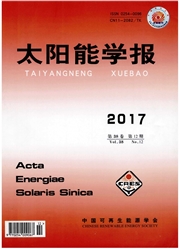

 中文摘要:
中文摘要:
外保温围护结构是我国目前实现“建筑节能规范”要求的主要措施,而相变围护结构因其蓄热量大、温度波动小等优点近年来得到广泛的研究。尤其需要针对性的研究在具体地区和气候条件下节能效果最好、最舒适的围护结构。针对夏热冬冷地区,通过对比围护结构相变材料层和保温层对围护结构能耗及内表面温度的影响,分析相变围护结构在夏热冬冷地区-湖南长沙的适用性。模拟结果表明:在长沙夏季典型气象条件下,更适合使用外保温围护结构。
 英文摘要:
英文摘要:
The exterior insulation envelope is the major measure to realize building energy efficiency standard requirements. While the building phase change material (PCM) envelope have been widely studied in recent years due to its advantages as small temperature change and large energy density. Due to the different climatic characteristics of specific areas, the comparative analysis is needed knowing which envelope is more energy saving and comfortable. Aiming at the hot-summer and cold-winter region, by comparing the influence of the phase change material layer with that of the thermal insulation layer on the energy consumption and internal surface temperature of the envelope, the applicability of the phase change envelope structure in Changsha, Hunan, a hot-summer and cold-winter zone was analyzed. The simulation results show that the south wall is more suitable for exterior insulation envelope in typical meteorological condition, Changsha of Hunan.
 同期刊论文项目
同期刊论文项目
 同项目期刊论文
同项目期刊论文
 期刊信息
期刊信息
